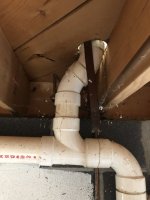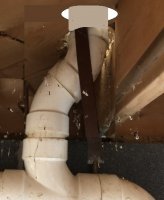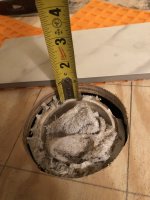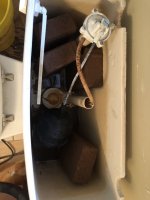fallvitals
New Member
Hello. I’m a DIY guy, but plumbing is something I haven’t really messed with too much.
Was attempting to remove an old glued on (the outside of the pipe) toilet flange from a 3” ID pipe. Ended up cracking.
I do have access from the basement luckily. Looks like I can easily cut off the elbows at the straight portion of pipe and redo it, my question is how do I “raise” the height of the pipe without doing it jackleggy? lol.
It actually wouldn’t hurt to be a smidge higher because in retiling and overall the floor till end up about 1/2” taller than before.
Thanks.
Was attempting to remove an old glued on (the outside of the pipe) toilet flange from a 3” ID pipe. Ended up cracking.
I do have access from the basement luckily. Looks like I can easily cut off the elbows at the straight portion of pipe and redo it, my question is how do I “raise” the height of the pipe without doing it jackleggy? lol.
It actually wouldn’t hurt to be a smidge higher because in retiling and overall the floor till end up about 1/2” taller than before.
Thanks.




